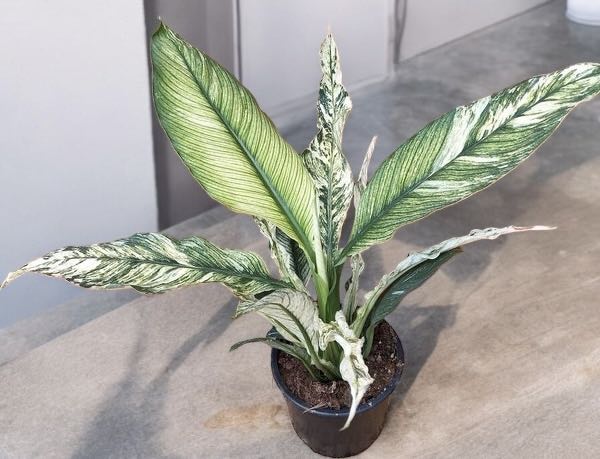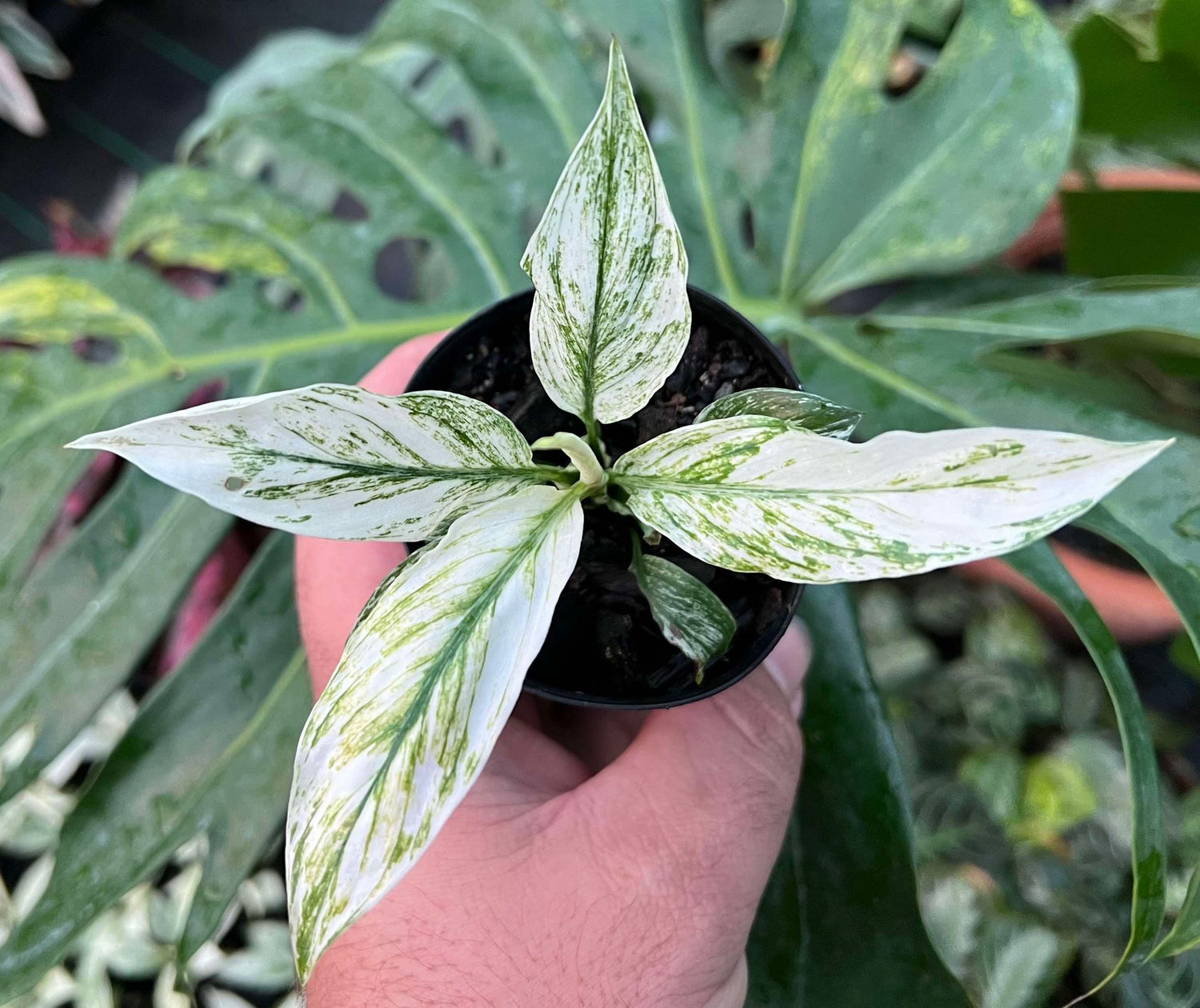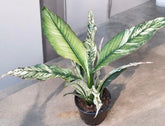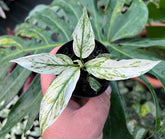Spathiphyllum 'Sensation Variegated' 75mm Pot **See Note**
- Regular price
-
$22.95 - Regular price
-
- Sale price
-
$22.95
-
Hurry, only 3 items left in stock!
Couldn't load pickup availability
Shipping information
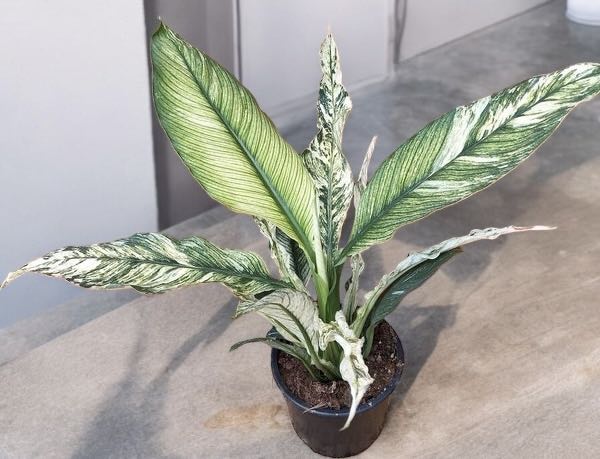
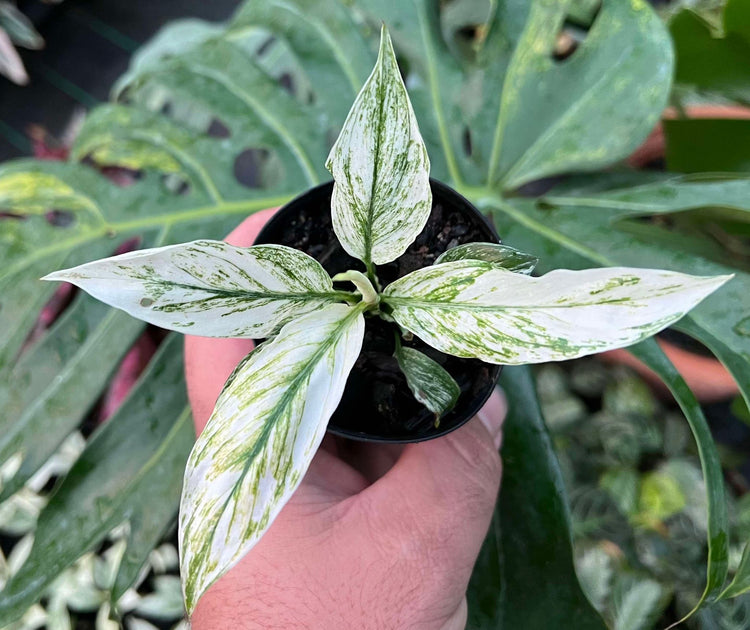
Product Details
This Spathiphyllum tends to go green in the heat of summer and then goes back to variegated in the cooler months and into Spring. Currently all the new growth is green and it SHOULD go back variegated once it cools down. It has happened each year I have grown these, but I cannot make any guarantees. SAMPLE PHOTO IS OF THE COLOUR BEFORE IT GOT HOT AND HUMID OVER THE SUMMER MONTHS.
Welcome to Plant&Leaf and our range of family grown plants. The first photo serves as a representative display, showcasing the beauty of a mature plant. The second photo provides a sample of a single plant from the current batch available. Please note the Pot size displayed on the heading of each product.
All of our plants are grown outdoors in nature and are exposed to the natural elements. Sometimes this means a leaf could have been chewed here and there or have a blemish or two – but we do our best to send the best plants we can on every order.
Spathiphyllum, commonly known as peace lily, is a popular houseplant appreciated for its elegant foliage and white blooms. Here's how to keep your Spathiphyllum thriving:
-
Light: Peace lilies prefer bright, indirect light but can tolerate lower light conditions. Avoid exposing them to direct sunlight, as it can scorch their leaves. Place your peace lily near a north or east-facing window where it can receive gentle, filtered light.
-
Watering: Keep the soil consistently moist but not waterlogged. Water your peace lily when the top inch of soil feels dry to the touch. Wilting leaves can be a sign that the plant needs water, but try not to let it dry out completely. Overwatering can lead to root rot, so ensure proper drainage in the pot.
-
Humidity: Peace lilies prefer higher humidity levels. If you're growing them indoors, consider placing them in a bathroom or kitchen where humidity tends to be higher. Alternatively, you can increase humidity around the plant by misting the leaves regularly or placing a humidifier nearby.
-
Temperature: Peace lilies thrive in temperatures between 18-27°C. Avoid exposing them to cold drafts or sudden temperature changes, as they can be sensitive to these. Keep them away from air conditioning vents or heaters.
-
Soil: Plant peace lilies in well-draining potting soil rich in organic matter. A mixture of peat moss, perlite, and/or sand works well. Repotting may be necessary every couple of years as the plant grows.
-
Fertilizing: Feed your peace lily with a balanced liquid fertilizer diluted to half strength every 4-6 weeks during the growing season (spring and summer). Reduce or stop fertilizing during the fall and winter months when growth slows down.
-
Pruning: Remove any yellow or brown leaves as they appear, and trim spent flowers to encourage new blooms. You can also prune the plant to control its size and shape if needed.
-
Pests and Diseases: Keep an eye out for common pests such as spider mites, aphids, and mealybugs. Treat any infestations promptly with insecticidal soap or neem oil. Peace lilies are generally resistant to diseases, but overwatering can lead to root rot or fungal issues, so be mindful of watering practices.
By following these care tips, you can enjoy a healthy and beautiful peace lily plant in your home or office.

